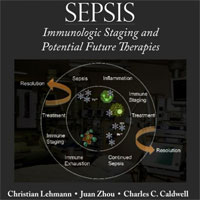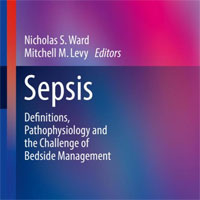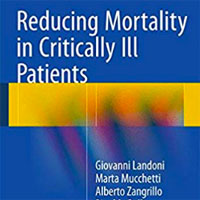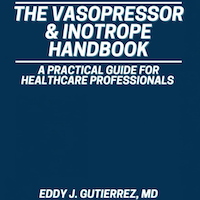Tag: pulmonary embolism
Post COVID-19 Pulmonary Fibrosis
Pulmonary fibrosis is a frequently reported COVID-19 sequela in which the exact prevalence and risk factors are yet to be established. This meta-analysis aims to investigate the prevalence of post-COVID-19 pulmonary fibrosis... read more
Deconstructing the Way We Use Pulmonary Function Test Race-Based Adjustments
Race is a social construct. It is used in medical diagnostic algorithms to adjust the readout for spirometry and other diagnostic tests. The authors review historic evidence about the origins of race adjustment in spirometry,... read more
Recognizing Vaccine-Induced Immune Thrombotic Thrombocytopenia
Vaccine-induced immune thrombotic thrombocytopenia is a serious complication of vaccination that is not feasible to anticipate or prevent. When the patient presents with sustained headache, neurologic symptoms/signs,... read more
Hypocalcemia Association with In-hospital Mortality and Complications in Patients with Acute Pulmonary Embolism
Pulmonary Embolism (PE) patients with hypocalcemia have higher in-hospital mortality than those without hypocalcemia. The in-hospital complications were also higher, along with longer length of stay. In the 2017 NIS, 187,989... read more
Subsegmental Pulmonary Embolism Increased Rate of Recurrent VTE
Overall, patients with subsegmental pulmonary embolism who did not have proximal deep venous thrombosis had a higher-than-expected rate of recurrent venous thromboembolism (VTE). Recruitment was stopped prematurely because... read more
Optimal Follow-up After Acute Pulmonary Embolism
This position paper provides a comprehensive guide for optimal follow-up of patients with acute pulmonary embolism (PE), covering multiple relevant aspects of patient counselling. It serves as a practical guide to treating... read more
Management of Pulmonary Embolism in the ICU
Pulmonary embolism is a reason for admission to the Intensive Care Unit and this complication in hospitalised patients is associated with high morbidity and mortality. The identification and management of pulmonary embolism... read more
POCUS of the Heart and Lungs in Patients with Respiratory Failure
Point-of-care ultrasound (POCUS) is a focus oriented tool for differentiating among cardiopulmonary diseases. Its value in the hands of emergency physicians, with various ultrasound experience, remains uncertain. We tested... read more
Learning From Doctors with Long COVID-19
When Sarah Burns and Sue Warren started a support group for doctors with long covid, they found a number of people struggling with new experiences, losses, and vulnerabilities Long covid has emerged as a serious, yet poorly... read more
Causes and Timing of Death in Critically Ill COVID-19 Patients
Mortality rate of critically ill COVID-19 patients is high, especially in those requiring invasive mechanical ventilation. However, the causes and the timing of death of patients admitted to the ICU for SARS-CoV-2 pneumonia... read more
Contrast-enhanced Ultrasound (CEUS) of the Lung Reveals Multiple Areas of Microthrombi in a COVID-19 Patient
Peng et al. have outlined several characteristics common to all COVID-19 patients using lung ultrasound and the 12 zone method. Zotzmann et al. in a follow-up letter raised the question on whether these areas of subpleural... read more
Estimate Artery Occlusion Pressure in Critically Ill Patients Under Mechanical Ventilation Using Doppler Echocardiography
In mechanically ventilated critically ill patients, Doppler transthoracic echocardiography indices are highly specific but not sensitive to estimate pulmonary artery occlusion pressure. Transmitral early velocity wave... read more
Thrombotic and Hemorrhagic Complications in Critically Ill Patients with COVID-19
Critically ill patients with COVID-19 experience high rates of venous and arterial thrombotic complications. The rates of bleeding may be higher than previously reported and re-iterate the need for randomised trials to better... read more
The Pooled Prevalence of Pulmonary Embolism in Patients with COVID-19
It is needed to pay more attention to the relatively high prevalence of pulmonary embolism (PE) in COVID-19 patients, especially in ICU wards. Future studies that will explore the detection method considering high infectivity... read more
Real-time AI prediction for major adverse cardiac events in emergency department patients with chest pain
An artificial intelligence (AI) real-time prediction model is a promising method for assisting physicians in predicting major adverse cardiac events (MACE) in ED patients with chest pain. Further studies to evaluate the impact... read more
Post-Hospital VTE in Patients with COVID-19
The authors concluded that the rate of post-hospital venous thromboembolism (VTE) among patients with COVID-19 is low and that routine post-hospital prophylaxis is not necessary. Of the 1,877 hospital admissions with COVID-19... read more
Pulmonary Embolism in COVID-19 Patients in France
Pulmonary embolism (PE) in the context of coronavirus disease 2019 (COVID-19) appears to be driven largely by inflammation and coagulopathy rather than by traditional risk factors for thromboembolism. Study results suggest... read more
The Use of ECMO in Patients with Cardiopulmonary Failure Due to COVID-19
COVID-19 related cardiopulmonary failure such as ARDS and cardiogenic shock or massive pulmonary embolism can be successfully supported with ECMO. Judicious patient selection is important to enable maximal benefit and optimized... read more
Incidence of Pulmonary Embolism in Non-critically ill COVID-19 Patients
Recent studies suggest that thrombotic complications are a common phenomenon in the novel SARS-CoV-2 infection. The main objective of our study is to assess cumulative incidence of pulmonary embolism (PE) in non critically... read more
The Relevance of Thromboinflammation and Endothelial Dysfunction in COVID-19 Patients
The relevance of thromboinflammation and endothelial dysfunction in COVID-19 patients. Microvascular derangement is a key mechanism of multiple organ dysfunction and therapeutic strategies other than heparin, aimed at preserving... read more
Clinical Experience of Whole-body CT as the Initial Evaluation Tool After ECPR in OHCA Patients
Routine whole-body computed tomography (CT) after extracorporeal cardiopulmonary resuscitation (ECPR) in out-of-hospital cardiac arrest (OHCA) patients appears to have a limited role, as the majority is caused by ACS. However,... read more
Ventilatory Support and Mechanical Properties of the Fibrotic Lung Acting as a “Squishy Ball”
The management of the patient with lung fibrosis in the ICU is a challenge for the intensivist. The lack of studies defining the mechanical ventilation strategy, and the different underlying etiologies, make it difficult... read more









